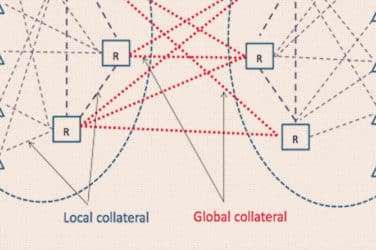
Liquidnet Barracuda, a liquidity-seeking algorithm that combines dark aggregation with lit trading, has been found to source liquidity expediently and favourably without incurring significant market impact.
Barracuda was launched in 2016 as part of Liquidnet’s Algo suite to combine the firm’s block offering with the opportunity to execute in the broader market ahead of the implementation of the European Union’s MiFID II regulations which capped trading volume in dark pools. The algorithm was designed to simultaneously seek a block in Liquidnet’s dark pool and opportunistically search for available liquidity across other lit and dark markets. Barracuda receives buy-side access to the Liquidnet pool, in addition to extensive reach across EMEA conditional and dark venues.
The algorithm intelligently executes more when favourable liquidity conditions exist and slows down when liquidity is scarce or less attractive according to Liquidnet. Traders can choose how they want to balance speed of execution against potential market impact by customising Barracuda’s aggressiveness across both its lit and dark components .
Liquidnet analysed Barracuda orders in EMEA between 1 January and 31 August 2023. Orders that were eligible for opportunistic liquidity capture outperformed by achieving an execution price that was better than the arrival price, and interval VWAP (Volume Weighted Average Price) according to a report.
Barracuda’s market impact against arrival price was -4.9 basis points. In contrast, if the orders had been executed primarily in lit markets they would likely have incurred significant market impact, which Liquidnet’s internal transactions cost models projected would have been 22.3 basis points, nearly four times higher that Barracuda’s market impact.
“Further, to minimize that potential market impact, many of these orders may have been worked in the market over several days,” added Conor Diviney, equities execution consultant at Liquidnet. “This would have increased susceptibility to price risk, something many traders might not consider suitable, especially for flow with elevated embedded alpha.”
Diviney stressed that Barracuda is first and foremost a dark liquidity-seeking algorithm, with 77% of the notional transacted in the dark and 29% completed on conditional venues.Further, fill size in Liquidnet was over five times greater than the fill size achieved in outbound conditional venues. Executions in Liquidnet saved clients 10.3 basis points of market impact that they would have otherwise incurred compared to 9.5 basis points in outbound conditional venues.
“Relative to trading the algorithm’s dark fills over time in lit markets, the analysis has shown Barracuda delivers 6.2 basis points of savings to clients,” said the report. “Furthermore, the opportunistic logic embedded within the algorithm’s lit slices also yields benefits, saving clients 10.4 basis points on average, if it activates.”
The report gave some examples of how Barracuda has been used. For example there was a $7m buy order of a Spanish mid cap where prices moved abruptly upwards, through the order’s limit, in the first minutes of the order and then gradually reverted back toward arrival during the afternoon,
“The market had moved as well, and the name remained fairly valued during much of that time, but spreads were relatively wide and touch sizes had not changed,” said Diviney. “In these situations, the opportunistic logic will not activate, ensuring participation rates remain as expected and demonstrating how the three signals working in concert can achieve a better outcome than any one alone.”
Barracuda can be a critical piece of the trader’s toolkit, helping traders to capture liquidity when speed, but also sensitivity, of execution are paramount.







